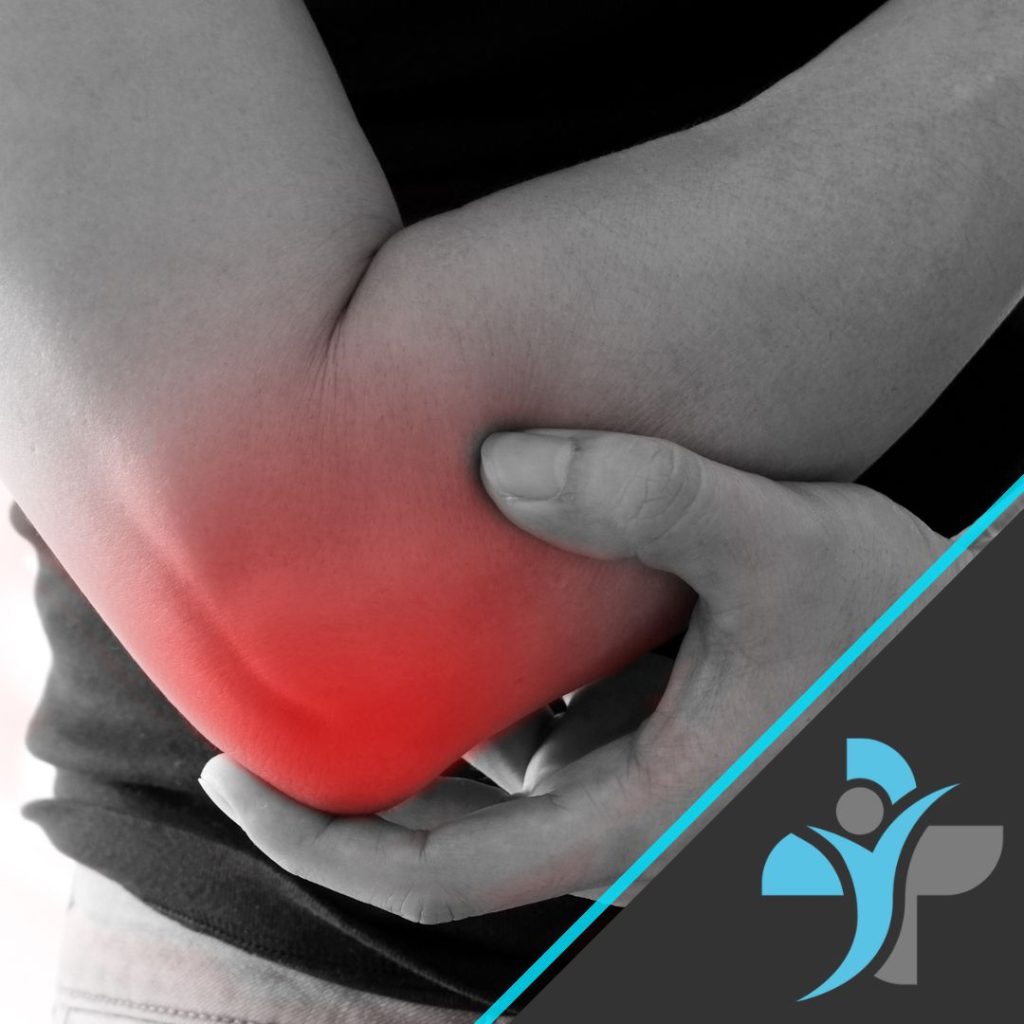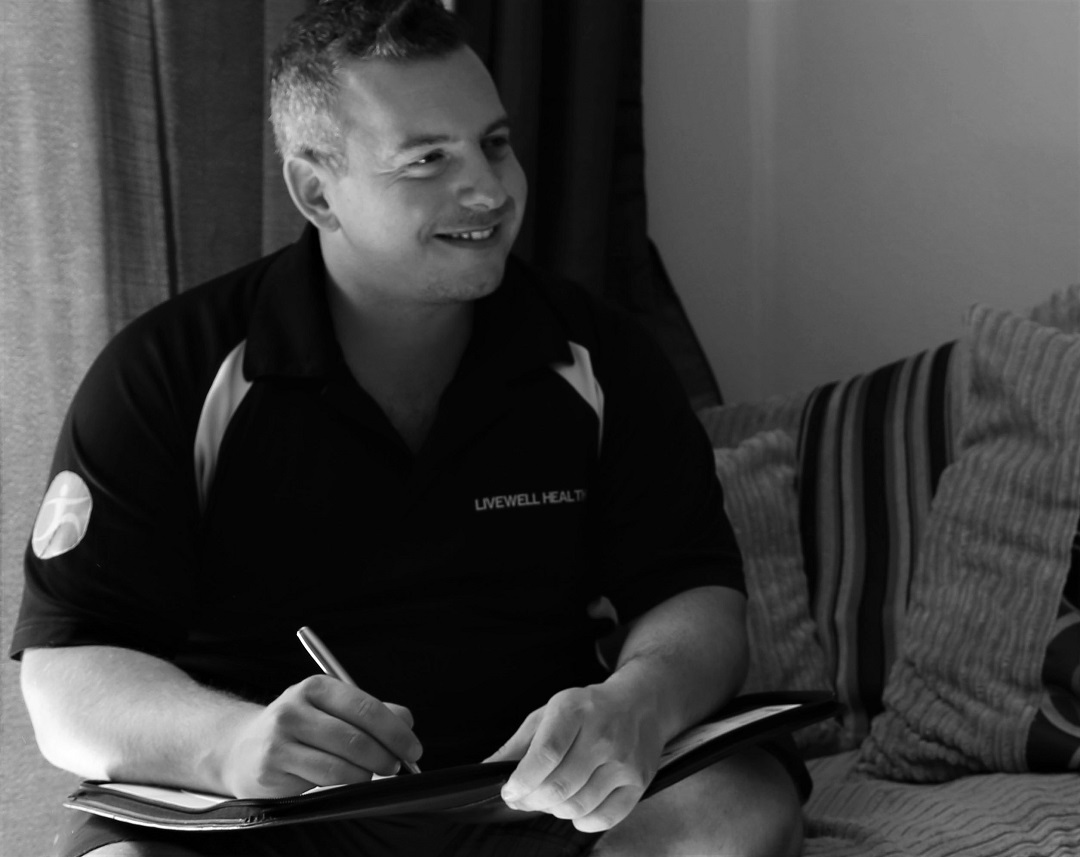Tennis elbow is a condition that causes pain around the outside of the elbow joint, the clinical name for this condition is known as lateral epicondylitis. It usually occurs after strenuous overuse of the muscles and tendons of the forearm. It is a very common musculoskeletal condition with an estimated 1 in 3 people having Tennis Elbow at any one time. The condition is more common in adults and across the age demographic of 30-50 years of age. Both Men and women are equally affected by this condition. Not surprisingly, and as the name suggests, playing tennis or other racquet sports can and is a big factor in the cause of this condition. However, several other sporting activities and non sporting activities can also put you at risk. Tennis elbow can be because of inflammation or, in some cases, small tears of the tendons that join the forearm muscles to the bone (epicondyle of the humerus) on the outside of the elbow.
Anatomy
Your elbow joint is a joint consisting of 3 bones. The first is in your upper arm and known as the Humerus. The other 2 bones are in your forearm and known as the Radius and Ulna bones. At the bottom of the humerus there are small bony prominences called epicondyles, where muscles within the forearm attach. The bony prominence located on the later side of the elbow (outside) is called the lateral epicondyle.
Muscles, ligaments, and tendons play a huge role in holding the elbow joint in position with strength but also flexibility to move.
Lateral epicondylitis, or tennis elbow, is a condition that affects the muscles and tendons of your forearm however extensive research has shown one particular muscle can play a large part in Tennis Elbow which is the Extensor Carpi Radialis Brevis (ECRB) muscle. The muscles associated with Tennis Elbow are responsible for the extension of your wrist and fingers.
Symptoms
The symptoms of tennis elbow usually develop over a long period of time. In the vast majority of tennis elbow cases the pain can just be minor and more of a side note but can worsen over time. In most cases there is no specific injury associated with the condition, it is usually a repetitive overuse injury but not in all cases.
Common signs and symptoms of tennis elbow include:
- Pain or burning on the outer part of your elbow
- Pain when lifting, twisting or bending your arm (with or without objects)
- Weak grip strength
- Sometimes, pain at night on the outside of your upper forearm, just below the elbow.
- You may also find it difficult to fully extend your arm.
- The symptoms are often worse when the forearm is being used in activities that can be as simple as pouring water into a cup, using a screw driver even shaking hands.
Causes
Overuse – Recent studies have show that a particular muscle, when damaged can play a large part in the cause of Tennis Elbow. This muscle, located in the forearm, is known as the extensor carpi radialis brevis (ECRB). It is a muscle that helps in stabilizing the wrist when the elbow is straight.
When the ECRB is injured / weakened from overuse or a specific incident, small tears appear in the tendon where it attaches to the lateral epicondyle (bony prominence). This of course then leads to inflammation and the resulting pain.
Studies also show, the ECRB could be at a greater risk of damage because of its position. As the elbow bends and straightens, the muscle rubs against bony bumps. This can cause gradual wear and tear of the muscle over time.
Activities – Activities play a large part in the cause of Tennis Elbow (Lateral epicondylitis). As you would expect Tennis and other racket sports are a factor in the case of Tennis Elbow (hence the name) however anyone can get it and it could even be down to work related overuse. Professionals such as Plumbers, Electricians, Carpenters, Factory Workers, Cooks and Butchers can get this condition based on how they are using their arm such as the use of screw drivers with the twisting actions etc
Age – Anyone can get Tennis Elbow at any stage in their life depending on the activities they are doing and how they are using their arm. That said, the majority of cases we see can range between the ages of 30 and 50.
Unknown – Tennis Elbow (Lateral epicondylitis) has been known to occur even without any particular reason such as repetitive over use etc. If this happens, it is called “idiopathic” or in layman’s terms, of an unknown cause.
Pain that occurs on the inner side of the elbow is often known as golfer’s elbow
Diagnosis
When discussing this issue with your doctor, they will take into consideration a number if factors before making a diagnosis. These will include how your symptoms developed, your work and your hobbies etc.
The Doctor will discuss how and when the symptoms occur and are more severe and where on the arm the pain / symptoms are materialising. You will need to make sure you inform your doctor of any underlying health issues such as Arthritis (RA or Osteo), you you have injured your elbow in the past or any other medical issues that has a baring on your elbow.
There are a number of tests the doctors can and should perform during your examination such as asking you to try straighten your wrist and fingers with the doctor providing resistance with your arm straight.
Your doctor may recommend additional tests such as X-rays, Magnetic resonance imaging (MRI) scan or an Electromyography (EMG) – this will be to rule out nerve compression.
Treatment
Tennis elbow is a condition that will eventually get better over time, the length of time will be determined by how much you are using the arm in the way in which it was damaged in the first place. This may mean you will need to stay off certain activities indefinitely for a period of around 6-8 weeks. This could be shorter or longer depending on what state the injury is in.
However, there are treatments that can be used to speed up your recovery and ultimately help alleviate symptoms while you recover.
The first stage in any recover is REST. It is important you rest your injured arm and stop doing the activity that’s caused the problem in the first instance.
ICE – Apply a cold compress to the injured arm, such as a bag of frozen peas or a sports ice pack / gel pack for a few minutes several times a day, this will reduce inflammation and ease the pain. Some people have great success with contrast bathing the area so for example, icing the joint itself (the bony / tendinous areas) and using heat on the muscular areas such as Forearm to relax the muscles and speed up recover.
PAINKILLERS – Taking Paracetamol to ease the pain and Non-Steroidal Anti-Inflammatory’s such as Ibuprofen to reduce the inflammation can help greatly whilst in recovery.
MASSAGE – Asking your personal Sports Therapist / Massage Therapist to perform a sports massage on the arm offering STR (Soft Tissue Release) as well as general massage to relax the area and stimulate blood flow can really help to speed up recovery and make you feel better.
PHYSIOTHERAPY – Physiotherapy should be considered with other conservative treatment options especially for more severe and persistent cases.
A good rehabilitation plan with those elements mentioned above has seen great results and improved recovery time as well as reduced inflammation, reduced pain and improvement to the range of movement in your arm.
SURGERY may be an option if the issue persists and you have gone through a considered and tailored physiotherapy and massage program as a last resort to remove the damaged part of the tendon.
Depending on the severity of your Tennis Elbow, recovery can take anything from a couple of months through to 2 years in the most extreme cases. Getting over such an injury should not be considered quick or with a magic treatment, recovery and repair takes time, getting the rehabilitation right is also a very important thing to consider to stop this reoccurring.
Exercises
There are a number of exercises you can perform to help in the recovery of Tennis Elbow but also to help strengthen the area to help in the preventing moving forward. We have put together a video of some of the popular and most effective exercises / rehabilitation programs for this condition. Alternatively you can consult one of our personal trainers or strength & conditioning coaches.
Prevention
It’s not easy to avoid getting tennis elbow as it can be very minor issues that cause it. However a dynamic and considered training program with a qualified strength and conditioning coach can really help. Further to this if your injury was caused through overuse then looking at reducing that particular activity until you have strengthen the area or looking at other ways to do the task in question will help.
Should you need any further information or help, please contact a member of our team. Alternatively you can book one of our Sports Therapists or Physiotherapists through our online booking system.



